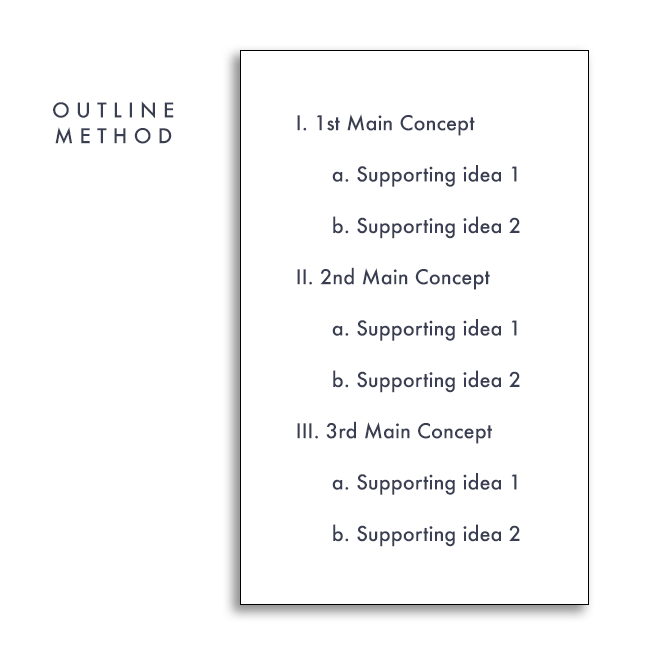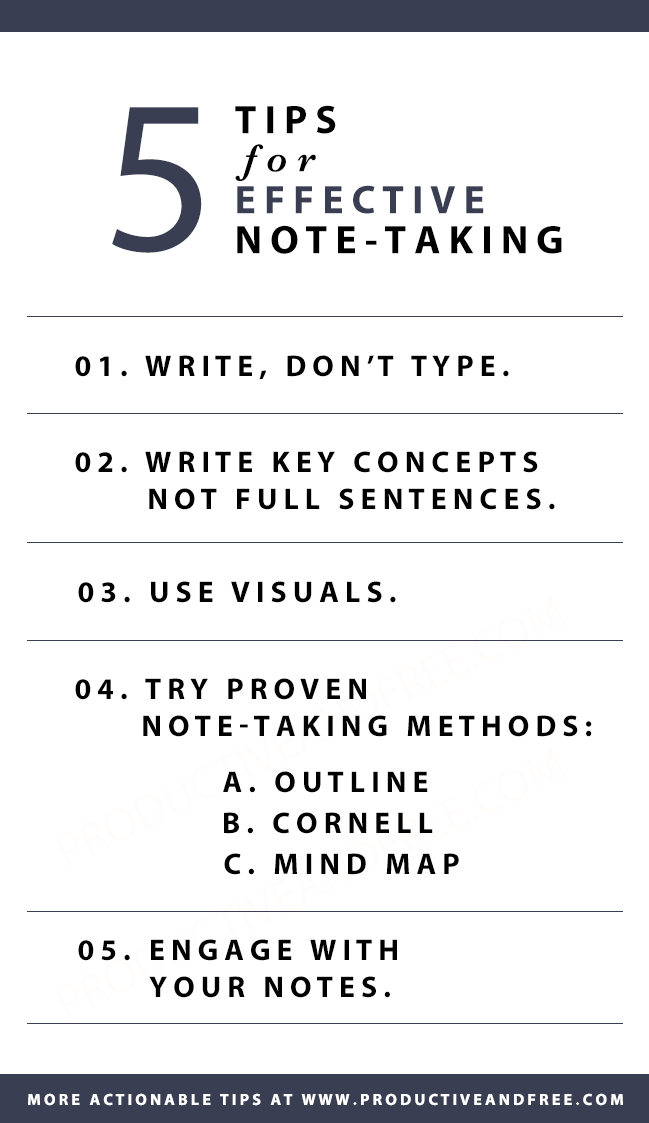5 Tips for Effective Note-Taking
Note-taking is a skill you can take with you well after your days in school. It's not only a way to recall important details to ace your tests but it's also an effective system for organizing thoughts and concepts.
Here are five tips for effective note-taking.
1. Write, don't type.
According to an article from NPR, it's better to write notes down as opposed to typing it on a laptop or iPad. The reason for this is that people can usually type faster than they write so the tendency is to take verbatim notes. However, when you take notes word for word, your brain is more focused on simply transcribing the lecture as opposed to understanding the lesson.
Writing, on the other hand, is a much slower process than typing so the tendency is that the brain will be more selective of what to write. And so your brain is immediately forced to understand or process the lecture as you're hearing it and then pick out important topics to jot down so you can keep up with the professor.
2. Write down key concepts instead of full sentences.
Related to the first tip, it's extremely difficult to process what the professor is saying when you're busy playing catch-up with each word he/she says. Studies show that note-taking is most effective when coupled with listening and understanding skills so, during the lecture, try to focus and be present.
When you only jot down key concepts instead of full sentences, you're able to process the lecture on the spot so this helps with not only your learning but also with your retention or memory as well.
3. Use visuals whenever possible.
According to research, visuals are processed 60,000 times faster than text and most people are in fact said to be visual learners. So it's not really surprising that the power of visuals has long been harnessed in the world of advertising, online marketing, and even learning.
Because visuals can relay information much faster than text, why not use these in your note-taking? If you include symbols, graphs, or even sketches, not only will this help keep you interested but it will also effectively facilitate the learning and memory retention process.
Want to be productive while growing your dream business?
We have over 40 sets of strategic time-saving templates that can help!
4. Make use of these note-taking methods.
Every student tends to develop their own way of taking notes. If you compare two notebooks side-by-side, you'll most likely find different layouts and signifiers which won't make sense to people other than the note taker him/herself.
It's important to remember, however, that there are some proven note-taking methods you may want to consider:
a. Outline Method
The outline method is pretty self-explanatory since it allows you to identify the main points of a particular lesson along with corresponding secondary points as subheadings of the outline. Further supporting details are placed under the subheadings so you're able to differentiate the overarching concepts from the less important details.
The outline this method is usually preferred in a laptop since you're able to easily add to previous topics whereas it's a lot harder to make space when you're writing things down on a notebook. However, you can also use the outline method when you're reviewing your notes so as to remember the general flow of the lecture.
b. Cornell Method
The Cornell method is a popular note-taking strategy in which you divide a notebook's page into three parts. The right 2/3 of the page is for the actual notes you take during class. Include important details and concepts but you don't need to concern yourself with order or grammar at this point.
After the lecture, take the left 1/3 of the page and write down main questions or topics to break up or divide all your notes on the right side. Finally, at the bottom of the page, go over your notes from the lecture and summarize what you have learned in this area of the page.
c. Mind Map Method
The mind map method (sometimes referred to as the spider map method) allows you to visually see connections of different concepts. Usually, you'll have the main idea inside a circle on top or in the middle of a page. Then each subheading will be placed in a separate surrounding circle linked to the main idea through a line.
This method is helpful when you need to quickly take down notes and have no time to organize them such as in the outline method. You can also use this method for brainstorming or when you're reviewing for a test.
5. Engage with your notes.
Probably the most important aspect of note-taking is if and how you engage with your notes. It doesn't matter how concise or detailed your notes are if you don't understand any of it. This is precisely the reason why it's not advisable to simply review someone else's notes or copy from them.
Simple ways to engage with your notes is to quiz yourself or a classmate, pretend you're teaching the lesson to someone else, re-write an outline or mind map of your notes, or summarize the lesson in your own words.
In order for note taking to be effective, you'll need to have gone through the entire thought and learning process to gain a full understanding of the lesson. After all, it's just a bunch of written down facts and concepts until you're able to actually apply them in a test, an interview, a job, your business, or other aspects of your life.



















![One Page Media Kit [A] - Navy Blue](https://images.squarespace-cdn.com/content/v1/5849ea99ff7c5026f7bfdc54/1674690328865-341R6EI9WBSEY2RKRDEM/59.jpg)



